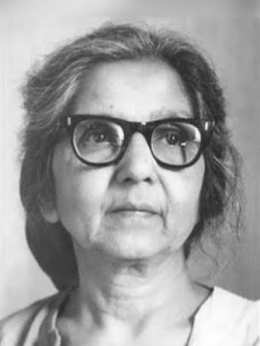
Aruna Asaf Ali was an Indian educator, political activist, and publisher. An active participant in the Indian independence movement, she is widely remembered for hoisting the Indian National flag at the Gowalia Tank maidan, Bombay during a Quit India Movement in 1942. Post-independence, she remained active in politics, becoming Delhi’s first Mayor.
Aruna Asaf Ali became a member of Indian National Congress after marrying Asaf Ali and participated in public processions during the Salt Satyagraha. She was arrested on the charge that she was a vagrant and hence not released in 1931 under the Gandhi-Irwin Pact which stipulated release of all political prisoners. Other women co-prisoners refused to leave the premises unless she was also released and gave in only after Mohandas K. Gandhi intervened. A public agitation secured her release.
In 1932, she was held prisoner at the Tihar Jail where she protested the indifferent treatment of political prisoners by launching a hunger strike. Her efforts resulted in an improvement of conditions in the Tihar Jail but she was moved to Ambala and was subjected to solitary confinement. She was politically not very active after her release, but at the ending of 1942, she took part in the underground movement. She was active in it.
On 8 August 1942, the All India Congress Committee passed the Quit India resolution at the Bombay session. The government responded by arresting the major leaders and all members of the Congress Working Committee and thus tried to pre-empt the movement from success. Young Aruna Asaf Ali presided over the remainder of the session on 9 August and hoisted the Congress flag at the Gowalia Tank Maidan. This marked the commencement of the movement. The police fired upon the assembly at the session. Aruna was dubbed the Heroine of the 1942 movement for her bravery in the face of danger and was called Grand Old Lady of the Independence movement in her later years. Despite the absence of direct leadership, spontaneous protests and demonstrations were held all over the country, as an expression of the desire of India’s youth to achieve independence.
Picture Credit : Google

